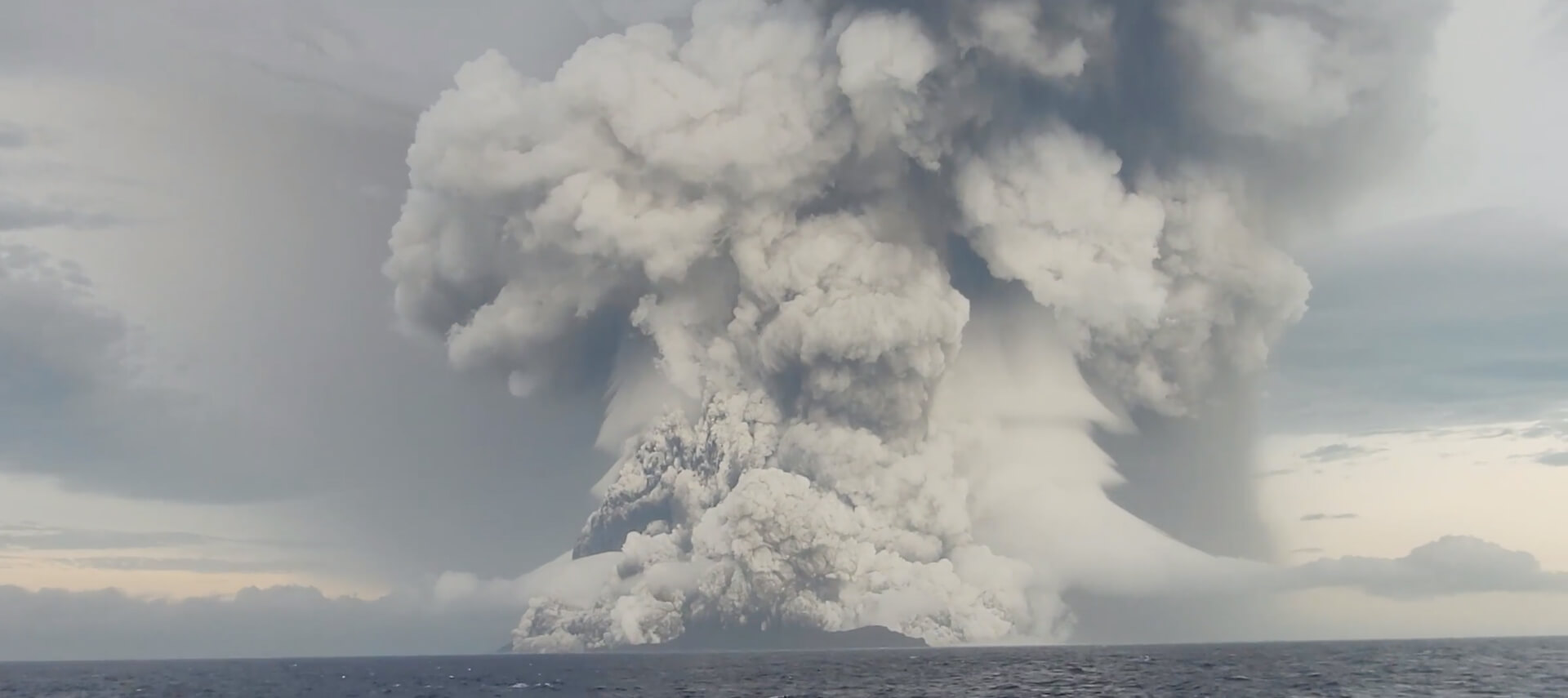On Saturday, the eruption of the underwater volcano Hunga-Tonga-Hunga-Ha’apai sent tsunami waves across the shore in Tonga, with water levels rising along the coast of Peru and the Pacific coast of the United States (US). Residents along the US Pacific coast, including Hawaii and Alaska, were asked to move to higher grounds.
The underwater volcano sent a plume of ash into the sky and triggered warnings of waves at least 1.2 metres high reaching the Pacific island. Reportedly, the eruption could be heard some 2,383 kilometres away in New Zealand. As the tsunami threat around the Pacific subsided on Sunday, a huge ash cloud was seen covering the Pacific island nation of Tonga.
WATCH: Tsunami from volcano eruption in Tonga reaches Peru pic.twitter.com/U9aj9cqGt2
— BNO News (@BNONews) January 16, 2022
New Zealand and Australia sent surveillance flights to assess the extent of the damage. The volcanic eruption cut the power supply, severed communication, and covered the Pacific island in ash. Reporting on the same, New Zealand’s Prime Minister, Jacinda Ardern, said Nuku’alofa, the capital of Tonga, has suffered significant damage. She added that there had been no reports of injury or death; however, the final assessment remains.
I can't fathom seeing the #tonga Volcanic eruption in real-time from boat. This is insane.pic.twitter.com/1dXRa0lX25
— Doc V (@MJVentrice) January 15, 2022
Ardern said power and communication were restored in some parts of the island. However, some areas still lacked electricity. She stressed the need for fresh water as the dust had contaminated water supplies. The aid organisation urged people to drink bottled water and wear masks to protect their lungs from volcanic ash.
Likewise, New Zealand’s Acting High Commissioner in Tonga, Peter Lund, said the island looked like a moonscape after being covered with volcanic ash. In a tweet, New Zealand’s Defence Force confirmed the take-off of the Orion aircraft from Auckland on Monday morning to aid in the initial assessment of the area and the surrounding low-lying islands.
In an official media release, Australia’s Minister for Foreign Affairs, Marise Payne, confirmed the acceptance of the federal government’s offer for a surveillance flight by the government of Tonga and hence, Australia’s Defence Force P-8 was scheduled to depart on Monday morning to evaluate the damage caused by the volcanic eruption and subsequent tsunami. The Australian federal government also committed to responding to the request for assistance from the Department of Foreign Affairs and Trade and the Department of Defence, who are coordinating critical humanitarian supplies for disaster relief in Tonga.
Two planes have taken of from the RAAF Base at Amberley headed for Tonga. A surveillance plane and a C130 @BreakfastNews @abcnews @abcbrisbane pic.twitter.com/brT9Jm3VNm
— Michael Rennie (@mf_rennie) January 16, 2022
Curtis Tu'ihalangingie, the Tongan High Commission deputy head in Australia, said no casualties had been reported as of now. “So far, we [have received] minimal damage to just the coastal site of the capital and some parts of Tonga, the main island of Tongatapu, and so far we have not received a report of any death,” he said.
Britain’s Minister of State for Pacific and Environment, Zac Goldsmith, expressed concern over the situation in Tonga and said the country is ready to help their Commonwealth partner and friend in any capacity. Similarly, the US Secretary of State Antony Blinken also expressed concern for the people of Tonga and expressed willingness to extend support to Pacific neighbours.
Deeply concerned for the people of Tonga as they recover from the aftermath of a volcanic eruption and tsunami. The United States stands prepared to provide support to our Pacific neighbors.
— Secretary Antony Blinken (@SecBlinken) January 16, 2022
Katie Greenwood of the International Federation of Red Cross and Red Crescent Societies (IFRC) said urgent help was needed. “We suspect there could be up to 80,000 people throughout Tonga affected by either the eruption itself or from the tsunami wave and inundation as a result of the eruption,” she said.
The volcano had been steadily erupting for several days. The Tonga Meteorological Agency had earlier warned of the smell of sulphur and ammonia being reported from several areas. Satellite images show some outlying islands to have been submerged completely. Some experts claim that the eruption of the Hunga-Tonga-Hunga-Ha’apai volcano is one of the most violent in the region in decades. The volcano has erupted several times in the past with the most notable eruptions in 2014 and 2015.

